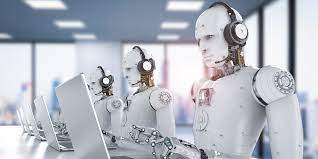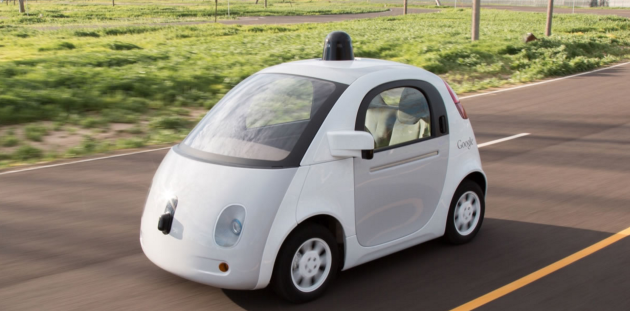BOT or NOT? This special series explores the evolving relationship between humans and machines, examining the ways that robots, artificial intelligence and automation are impacting our work and lives.
Google’s self driving car project. Photo via Google.
Google is testing subcompact self-driving cars. (Photo via Google)
WASHINGTON, D.C. – The robot revolution may put half of us humans out of a job by 2045 – and if that happens, what are the politicians going to do about it?
“This issue of automation and employment, which is going to be one of the biggest policy issues for the next 25 years, if not longer, and now we’re in a presidential election year … this issue is just nowhere on the radar screen,” Rice University computer scientist Moshe Vardi said today at the American Association for the Advancement of Science’s annual meeting in Washington.
Vardi and other experts on artificial intelligence sketched out a scary picture of what the next couple of decades could bring as machines become smarter, more powerful and more prevalent. It’s a picture that’s developing quickly, thanks to the rise of machine vision and machine learning.
Bart Selman, a computer science professor at Cornell University, said he would not have been as concerned about AI’s downside five years ago. Since then, however, engineers have brought about dramatic improvements in the ability of software systems to see, hear and understand their environment. He estimated that the challenges associated with computer vision are “90 percent solved right now.”

I suspect in 25, 30 years … it will be illegal to drive a car on the street.
The driver for much of this rapid progress is … driving. Google, Apple, Ford, Tesla and BMW are just a few of the companies working on autonomous vehicles, and they’re getting better and better. “They read traffic signs better than humans do,” Selman said.
Just this month, the National Highway Traffic Safety Commission sent Google a letter saying that the company’s self-driving system, rather than a human, could be officially regarded as the vehicle’s driver – a ruling that’s likely to bring the era of driverless cars closer.
Experts say putting a well-trained computer in charge of the car should reduce traffic accidents dramatically, potentially saving thousands of lives annually. At some point, insurers may well add to the push toward more autonomous vehicles. Oren Etzioni, CEO of the Seattle-based Allen Institute for Artificial Intelligence, has said that driving an automobile will probably become merely a hobby for humans by 2035.
Vardi agreed with that assessment. He compared the driving of tomorrow to the recreational horseback riding of today. But he also pointed out that riders aren’t generally allowed to take their horses out on city streets. The same may go for automobile driving by humans.
“I suspect in 25, 30 years it will be a hobby … but it will be illegal to drive a car on the street,” Vardi said. “You will have to go to a special place.”
Wendell Wallach, a scholar at Yale University’s Interdisciplinary Center for Bioethics, said that idea is likely to face some powerful pushback from the United States’ hard-driving, open-road culture. “I would say, here in America, that would be a revolutionary moment,” he said.
The impact on employment is almost certain to add to the friction, Vardi said: “Ten percent of U.S. jobs involve operating a vehicle, and we can expect the majority of these jobs to disappear.”
Are you going to bet against sex robots? I would not.
Vardi said automation is sure to have an impact on other employment sectors as well. There’s already been significant job loss in the manufacturing sector, and as robots look and act more like humans, the impact could spread to areas dreamed of only in science-fiction novels.
“Are you going to bet against sex robots? I would not,” he said.
Vardi said half of the world’s population may not have a job within 30 years, thanks in part to rapidly rising automation. That’s not as much of a stretch as it sounds: Although the official U.S. unemployment rate is currently just below 5 percent, Vardi uses a different statistic as his gauge.
The labor force participation rate, which is currently at 62.4 percent, focuses on how many Americans have a job or are actively looking for a job. That suggests that more than 37 percent of working-age Americans are not participating in the labor force – either because they’re on disability, or they’ve given up looking for a job, or they don’t want or need employment, or for a variety of other reasons. When Vardi talks about the workforce’s future slimdown, he’s talking about that kind of big picture.
It’s not too early to be thinking about the potential policy responses to the rise of the machines, and some are indeed thinking about them. Last year, SpaceX’s billionaire founder, Elon Musk, joined forces with other deep-pocketed deep thinkers to create the OpenAI Foundation, which is aimed at harnessing AI
